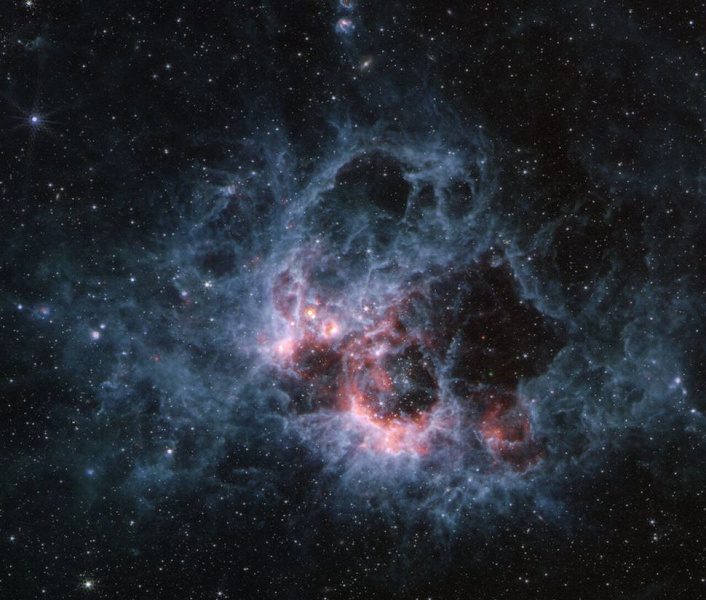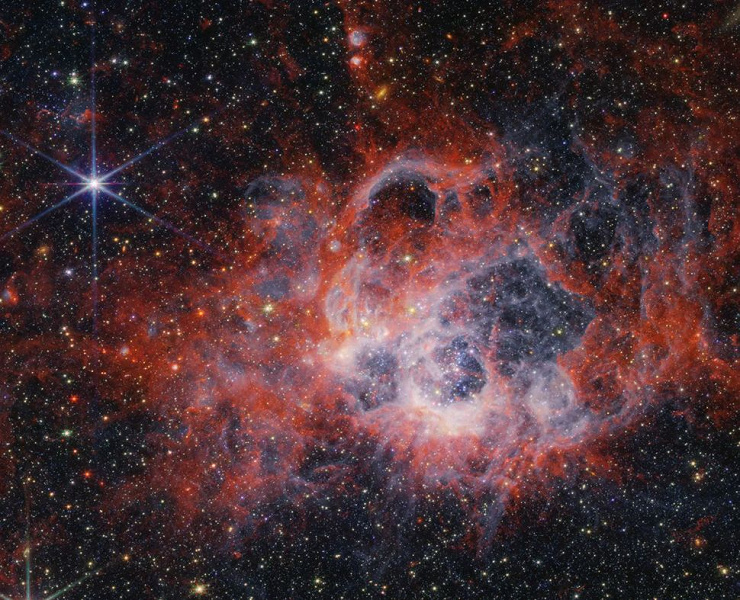Impressive images of the “stellar nursery” in M33
In photographs recently taken by the James Webb Space Telescope (JWST), detailed details of the star formation region in the Triangulum Galaxy are presented.
JWST captured these images with its Near Infrared Camera (NIRCam) and Mid-Infrared Camera (MIRI). The photographs show the star-forming region NGC 604, located approximately 2.7 million light years from Earth. The Triangulum Galaxy, where NGC 604 is located, is also known as Messier 33 (M33).
The gas clouds that fill this star-forming region are about 1,300 light-years in diameter. NGC 604 is considered relatively young — only 3.5 million years old, compared to the 4.6 billion age of our solar system.
JWST images show swirls and shells of gas surrounding more than 200 stars in the early stages of life. Such a high concentration of B and O stars, some of which have masses up to 100 times the mass of the Sun, is rare in the observable Universe.
The young stars emit intense ultraviolet radiation and create powerful stellar winds that form cavities in the gaseous contents of NGC 604. In MIRI and NIRCam images, these voids are visible as huge dark “bubbles” surrounded by thin curls.

The NIRCam image shows bright red filaments of gas radiating from these voids. The ghostly blue-white glow around these filaments is due to the ionization of hydrogen gas by ultraviolet radiation. The bright orange stripes in this image indicate the presence of carbon-based molecules known as «polycyclic aromatic hydrocarbons» (PAH). PAHs play an important role in the formation of stars and planets and are considered important building blocks of life on Earth. However, the origin of PAHs remains a mystery.
Farther from the dark voids are more voluminous red clouds, indicating the presence of non-ionized molecular hydrogen. It is this cold gas that is most likely to form stars, which are visible in the image in bright blue.
The MIRI image also contains details showing the dynamics of NGC 604, although this version is missing many of the bright blue stars visible in the NIRCam image. This is because stars emit less light in the mid-infrared wavelengths that MIRI is designed for. However, MIRI's image of NGC 604 shows fainter galaxies behind the stellar nursery.

